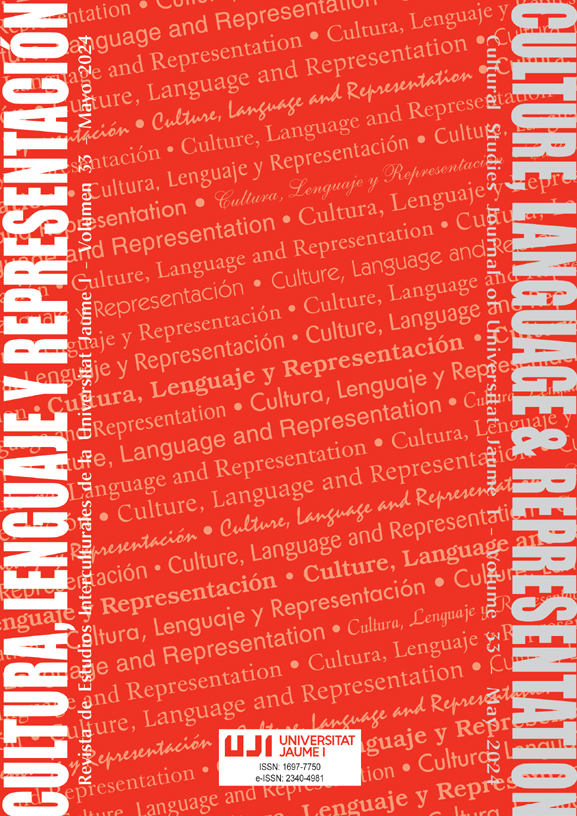X Never Mind Y: a cognitive approach within the context of complementary alternation constructions
Main Article Content
Abstract
Complementary alternation constructions are meaning and form pairings that are used to link two different states of affairs such that the second adds to the first based on a subjective speaker’s judgment, as in “I can’t afford a luxury car, let alone a private jet”. Other constructions in the family include connectors such as much less, never mind, and to say nothing of (Iza Erviti, 2015). Each of these configurations exhibits a variety of distinctive meaning properties while operating within the spectrum of complementary alternation. This study contends that the various meanings attributed to these constructions result from the activation of different cognitive operations. To support this assertion, this article presents an in-depth study of the X Never Mind Y construction, revealing how the different cognitive operations underlying it affect the nature of the intratextual connections it creates and the meaning effects it conveys. Furthermore, this article elucidates why this construction is applicable in a wide array of contexts. These findings support a novel classification of complementary alternation constructions based on the cognitive operations involved in the constructions.
Downloads
Article Details
An open-access CREATIVE COMMONS copyright license is used. Those authors whose works are published by this journal, accept the following terms:
- Authors will retain their copyright and guarantee the Journal the right to first publish their work, which will simultaneously be subject to the Creative Commons Recognition License CC BY SA that allows third parties to share the work, provided that its author and first publication is indicated.
- Authors may adopt other non-exclusive license agreements for the distribution of the published version of the work (e.g., deposit it in an institutional telematics file or publish it in a monographic volume) provided that the initial publication in this journal is indicated.
- Authors are allowed and recommended to disseminate their work over the Internet (e.g. in institutional telematics files or on their website) before and during the submission process, which can produce interesting exchanges and increase quotes of the published work.
Funding data
-
Agencia Estatal de Investigación
Grant numbers PID2020-118349GB-I00
References
Bender, Emily. M. & Kathol, Andreas. (2001). Constructional effects of Just because... doesn’t mean... BLS 27, 13-25. https://doi.org/10.3765/bls.v27i1.1089
Brdar, Mario. (2015). Metonymic chains and synonymy. Fluminensia, 27(2), 83–101.
Davies, Mark. (2004). BYU-BNC. (Based on the British National Corpus from Oxford University Press). Available online at http://corpus.byu.edu/bnc/
Davies, Mark. (2008). Corpus of Contemporary American English (COCA). Available online at http://corpus.byu.edu/coca/
Fillmore, Charles. J., Kay, Paul. & O’Connor, Mary Catherine. (1988). Regularity and idiomaticity in grammatical constructions: The case of let alone. Language 64(3), 501–538. https://doi.org/10.2307/414531
Hannay, Mike., Martínez Caro, Elena. & Mackenzie, J.Lachlan. (2014). Besides as a connective. In M. Gómez González, F. J. Ruiz de Mendoza Ibáñez, F. Gonzálvez-García & A. Downing (Eds.), The Functional Perspective on Language and Discourse: Applications and Implications (pp. 223–242). John Benjamins. https://doi.org/10.1075/pbns.247.12han
Hilpert, Martin. (2007).Chained metonymies in lexicon and grammar: A cross-linguisticperspective on body-part terms. In G. Radden, K.M. Köpcke, T. Berg, P. Siemund (Eds.), Aspects of Meaning Construction (pp. 77–98). Amsterdam/Philadelphia: John Benjamins. https://doi.org/10.1075/z.136.07hil
Iza Erviti, Aneider. (2015). Complementary alternation discourse constructions in English: A preliminary study. IJES (International Journal of English Studies) 1(1), 71–96. https://doi.org/10.6018/ijes/2015/1/194941
Iza Erviti, Aneider. (2017a). An exploratory study of complementary contrastive discourse constructions in English. Revista española de lingüística aplicada/Spanish journal of applied linguistics 30(1), 208–237. https://doi.org/10.1075/resla.30.1.09iza
Iza Erviti, Aneider. (2017b). The family of English contrast constructions at discourse level. In A. Baicchi & E. Pinelli (Eds.), Cognitive modelling in language and discourse across cultures (pp. 137–152). Cambridge Scholars Publishing.
Iza Erviti, Aneider. (2021). Discourse constructions in English: meaning, form and hierarchies. Yearbook of Corpus Linguistics and Pragmatics series. Cham, Switzerland: Springer. https://doi.org/10.1007/978-3-030-71680-6
Lakoff, George. (1987). Women, fire, and dangerous things: What categories reveal about the mind. The University of Chicago Press.
Lakoff, George., & Johnson, Mark. (1999). Philosophy in the Flesh: The Embodied Mind and Its Challenge to Western Thought. New York: Basic Books.
Noordman, Leo (2001). On the production of causal-contrastive although- sentences in context. In T. J. M. Sanders, J. Schilperoord & W. Spooren (Eds.), Text representation: Linguistic and psycholinguistic aspects (pp. 153-180). Amsterdam/Philadelphia: John Benjamins. https://doi.org/10.1075/hcp.8.09noo
Panther, Klaus Uwe. & Thornburg, Linda (2003). The EFFECT FOR CAUSE metonymy in English grammar. In A. Barcelona (Ed.), Metaphor and Metonymy at the Crossroads: A Cognitive Perspective (pp. 215-232). Berlin, Boston: De Gruyter Mouton. https://doi.org/10.1515/9783110894677.215
Quirk, Randolph., Greenbaum, Sidney, Leech, Geoffrey. & Svartvik, Jan. (Eds.). (1991). A Comprehensive Grammar of the English Language. London: Longman. https://doi.org/10.1017/S0272263100006549
Ruiz de Mendoza Ibáñez, Francisco.J. (2008). Cross-linguistic analysis, secondlanguage teaching and cognitive semantics: The case of Spanish diminutives andreflexive constructions. In S. De Knop & T. D. Rycker (Eds.), Cognitive Approaches to Pedagogical Grammar: Volume in honor of René Dirven (pp. 121–152). Berlin/New York: Mouton de Gruyter. https://doi.org/10.1515/9783110205381.2.121
Ruiz de Mendoza Ibáñez, Francisco. J. (2011). Metonymy and cognitive operations. In R. Benczes, A. Barcelona & F. J. Ruiz de Mendoza Ibáñez (Eds.), Defining metonymy in Cognitive Linguistics: Towards a consensus view (Cognitive Processing 28) (pp. 103–124). John Benjamins. https://doi.org/10.1075/hcp.28.06rui
Ruiz de Mendoza, Francisco. J. (2017). Metaphor and other cognitive operations in interaction: from basicity to complexity. In B. Hampe (Ed.), Metaphor: Embodied cognition and discourse, (pp. 138–159). Cambridge University Press. https://doi.org/10.1017/9781108182324.009
Ruiz de Mendoza Ibáñez, Francisco. J. & Galera, Alicia. (2014). Cognitive modeling: A linguistic perspective. Amsterdam/Philadelphia: John Benjamins. https://doi.org/10.1075/hcp.45
WebCorp: The Web as Corpus. Available online at http://www.webcorp.org.uk/live/
Wilson, Deirdre. & Sperber, Dan. (2012). Meaning and relevance. New York: Cambridge University Press. https://doi.org/10.1017/CBO9781139028370


